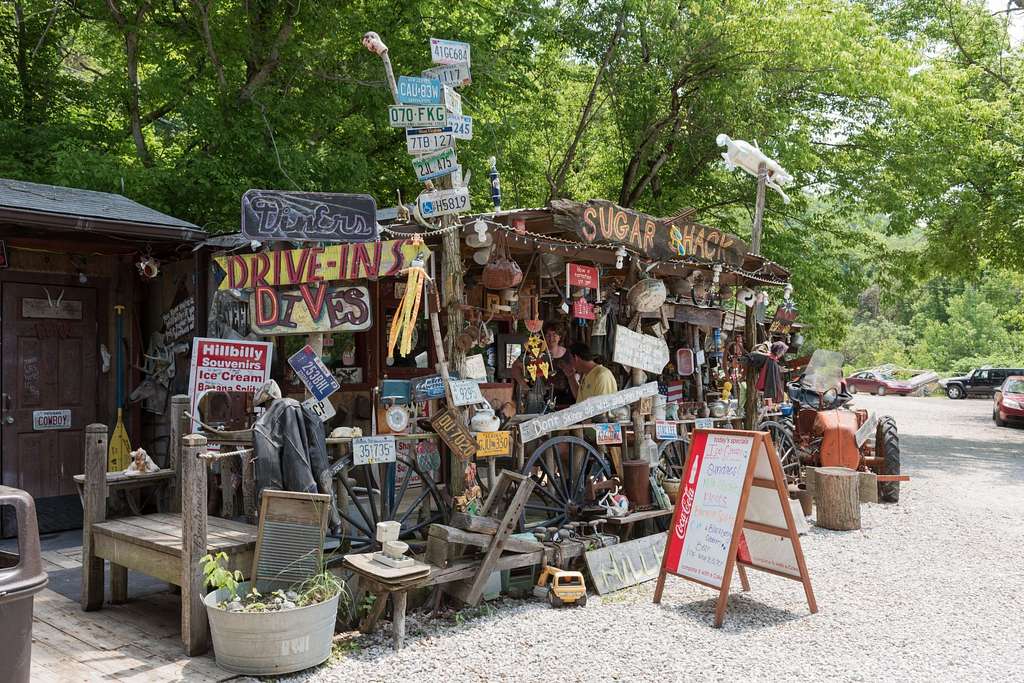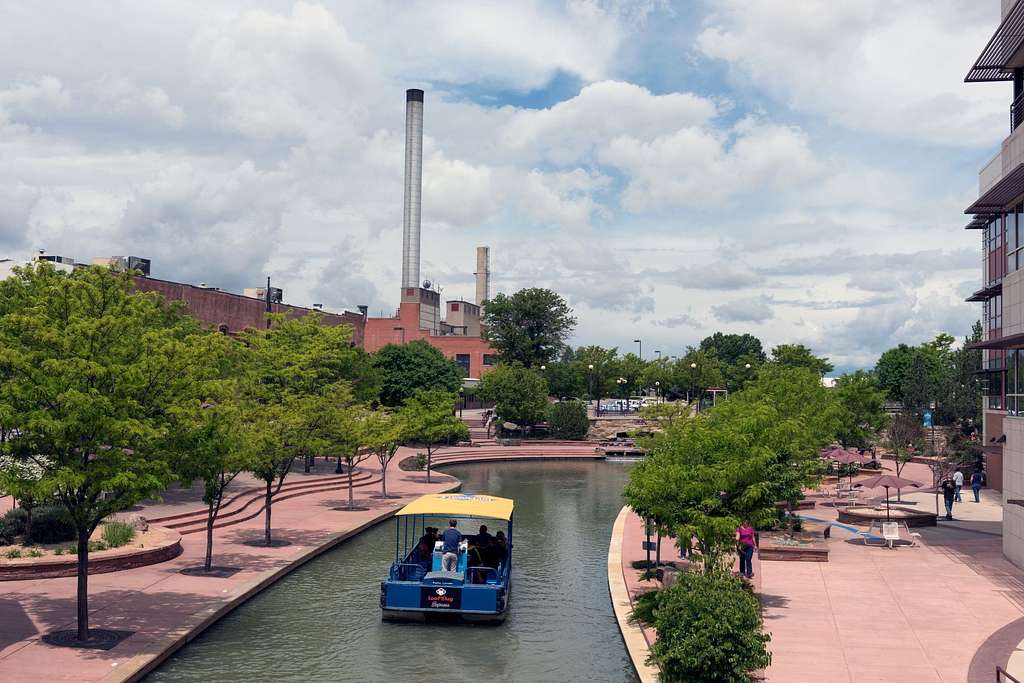Here’s a peek into the quiet little war your bank account fights every month—bills. While we all dream of sipping cocktails on the beach or owning a cabin in the woods, the real question is: what does it cost to just exist in different corners of America? Some states are like clingy exes—always taking and never giving—while others are chill roommates who never ask for rent on time (and you kinda love them for it). So if you’re house-hunting, relocating, or just like knowing who’s bleeding your wallet dry, here’s your cheat sheet to the 7 most and 7 least expensive U.S. states when it comes to monthly household bills.
MOST EXPENSIVE
1. Hawaii

Ah, paradise comes at a premium. Living in Hawaii means waking up to volcano views, swaying palms, and… astronomical costs for basic living. According to Hawaii News Now, the average household in Hawaii forks over $3,091 per month on essentials—that’s 45% above the national average. Why? Island life means nearly everything has to be shipped in, from apples to iPhones, which jacks up prices across the board. Even your electric bill gets wild thanks to high demand and limited local resources.
Then there’s housing. With a tight supply and relentless demand, rent and mortgages are basically doing the hula on your savings. Sure, you get daily sunsets that look like postcards and weather that barely changes—but the price tag might leave you sweating harder than a hike up Diamond Head. If you dream of moving here, either pack a rich uncle or get real cozy with budgeting apps. This is island living with a high-limit credit card vibe.
2. California

California: where the sun kisses your skin, the avocados are extra, and so is the cost of just breathing. From Malibu to Modesto, the Golden State shines—but it shines with gold-plated price tags. The Sacramento Bee found that California households spend an average of $3,010 a month on bills. That’s nearly 42% above the national average. Between sky-high rents, water restrictions, and gas prices that’ll make you cry at the pump, California is glam life with a tax.
It’s not just the big cities, either. Even smaller towns feel the ripple effect of soaring property values and steep insurance rates. And don’t even talk about child care or private school tuition unless you’re emotionally prepared. That said, the weather is dreamy, the tech jobs pay well (if you can get one), and your morning commute might include mountain views. But if you’re not pulling in Silicon Valley money, this might feel like financially cosplaying a Kardashian.
3. New Jersey

New Jersey’s not playing around when it comes to bill shock. Nestled between Philly and NYC, this little state somehow manages to charge like it’s both at once. Rent.com reports that the average household here shells out about $2,861 per month. Housing, internet, and property taxes all run high. Like, high enough to make you second-guess whether being close to good bagels and Bruce Springsteen is worth it.
The Garden State’s proximity to major metro areas definitely inflates costs, and don’t forget tolls—New Jersey has more of them than you have subscriptions. Insurance premiums here are no joke either, especially if you’re driving (and you will be driving). But for many, the benefits of suburban life with city access are too good to pass up. Just be ready for bills that come in faster than the Turnpike traffic.
4. Massachusetts

Massachusetts: where your monthly bills come with a side of clam chowder and academic prestige. Per LivingCost, Bay Staters average $2,829 a month in household expenses. Boston’s rental market alone could give your bank account vertigo. Add in steep heating costs in the winter, high taxes, and expensive health insurance, and suddenly your historic colonial home feels like it’s haunted—by debt.
But it’s not all grim. You get access to world-class hospitals, education, and public transportation that actually works. Plus, the charm of fall in New England almost makes up for the fact that your utility bill triples come December. Still, unless you’re making Harvard-adjacent money, you’ll feel the squeeze. Think Revolutionary War grit meets modern financial warfare.
5. Connecticut

Connecticut is that classy cousin who looks put together but is secretly drowning in bills. Patch.com says Nutmeg State residents cough up around $2,380 each month. That’s luxury-level spending without the tropical vibes. Why so pricey? Well, it’s got the taxes of New York and the quiet of New England, but that combo doesn’t exactly scream budget-friendly.
Add to that high utility bills—especially in winter—and car insurance that rivals your car payment, and you’re looking at some serious monthly outflow. The towns are beautiful, sure. Great schools, lots of trees, a “Gilmore Girls” aesthetic. But that white picket fence? It might come with a second mortgage. Basically, Connecticut is what happens when quiet luxury meets loud bills.
6. Alaska

Welcome to the land of the midnight sun… and some chillingly high expenses. Alaska isn’t often top-of-mind when people think “pricey,” but isolation comes with a cost. Like Hawaii, everything from milk to medicine has to travel a long way to get to you, and that cost lands squarely in your monthly bills. Heating costs in winter? Let’s just say you better love your parka—and your energy company.
But while bills hover well above the national average, the state does offer some relief. The Permanent Fund Dividend gives residents an annual payout from oil revenues, which softens the blow a bit. Plus, no state income tax. Still, the weather isn’t for the faint of heart, and neither is the cost of food or housing. Alaska is stunning and wild, but don’t expect it to be budget-friendly unless you’re living truly off the grid.
7. Maryland

Maryland is like the overachiever of the Mid-Atlantic—great schools, solid jobs, and a cost of living that knows it’s got you cornered. With easy access to both D.C. and Baltimore, Marylanders deal with metro-adjacent housing prices and steep property taxes. Internet, insurance, and health care costs also skew higher than average. It’s the kind of place where your paycheck is solid, but so are your monthly outgoings.
Still, it’s not all doom and bills. Maryland boasts beautiful shorelines, rich culture, and top-tier crab cakes. Many residents find the price tag worth it for the proximity to federal jobs and strong public infrastructure. But if you’re not cashing a government check or tech salary, prepare for the financial burn. Maryland’s got taste—and it charges accordingly.
LEAST EXPENSIVE
1. West Virginia

Say hello to your wallet’s best friend: West Virginia. It might not have the flash of coastal cities or the buzz of urban jungles, but if you’re looking to stretch a dollar, this is your promised land. With monthly bills averaging around $1,552, living here feels like finding a clearance rack in a designer store. Housing is especially affordable—think mortgage payments that don’t require selling a kidney. Utilities and internet follow suit, costing far less than the national average.
West Virginia is perfect if you value elbow room, mountain views, and a pace of life that doesn’t demand a standing meeting. It’s the kind of place where your paycheck gets to hang out a little longer in your bank account before disappearing. Sure, it might lack big-city thrills, but the low cost of living buys peace of mind (and maybe a riding mower). So if you’re into nature, frugality, and avoiding $7 lattes, you might just fall for the Mountain State.
2. Arkansas

Arkansas: come for the BBQ, stay for the shockingly low bills. The Natural State clocks in with average monthly expenses around $1,597—comfortably under the national average. Rent and utilities are cheap, and you won’t be bleeding out over groceries or gas, either. It’s one of those places where $200 can still buy you a cart full of food and a weekend getaway.
The lifestyle here is laid-back, with loads of access to outdoor fun like hiking, fishing, and float trips. And because it’s not overrun with traffic or high-rises, your stress levels and insurance premiums stay chill. The trade-off? Fewer big-city perks and slightly slower public services. But if you’re after simple pleasures and a bank balance that doesn’t scream in terror each month, Arkansas is an underrated gem.
3. Mississippi

If your vibe is southern charm on a discount, Mississippi’s calling your name. Monthly bills here hover around $1,602, making it one of the most affordable states in the country. Housing costs are ridiculously reasonable—like, “Is this rent or my old Netflix subscription?” reasonable. Utilities, transportation, and groceries also keep it humble, which gives your budget a little breathing room for fried catfish and sweet tea.
The state’s overall affordability allows for a better shot at homeownership, which is a major win in today’s market. That said, wages tend to be lower here, so it’s a trade-off of cost versus income. Still, if you’re remote-working or retiring, it’s a smart pick. And while you won’t find sprawling metros or trendy nightlife, you will find friendly folks, porch swings, and a life that doesn’t cost your soul.
4. Indiana

Indiana doesn’t ask for much—just that you pay your bills and maybe love basketball a little. The state’s average monthly household expenses land around $1,644, with low costs across the board. Rent is chill. Utilities are tame. Even car insurance behaves itself. It’s a financial breath of fresh Midwestern air.
The nice thing? You don’t have to live in the middle of nowhere to benefit. Even cities like Indianapolis manage to keep costs low while offering plenty of urban amenities. Commutes are easy, taxes are reasonable, and your savings account might actually grow for once. Indiana might not shout its virtues from the rooftops, but your budget will definitely sing its praises.
5. Kentucky

Kentucky: where the bourbon flows and the bills don’t bite. With an average monthly household spend around $1,658, this state offers solid savings without skimping on beauty. The housing market is blessedly affordable, and the cost of essentials—like groceries and gas—are among the lowest nationwide. You get all the Southern comfort without the Southern price tag.
There’s also a sense of peace here. Think rolling hills, horse farms, and front porch hangs. Kentucky delivers a quality of life that doesn’t require maxing out your credit cards. Plus, for young families or remote workers, the low costs open up room for real savings or fun side projects. It’s like a budget-friendly Hallmark movie, and honestly? Not mad about it.
6. Kansas

Flat jokes aside, Kansas is winning in the affordability department. Monthly bills average around $1,671, and that includes everything from housing to health insurance. The state is big on low taxes and wide-open spaces, which means you can actually afford both a home and some breathing room. Property prices are manageable, and utilities are budget-friendly, even in the winter.
Sure, you won’t find fashion week or Michelin-starred tasting menus here. But if you like clean air, sunsets that last for days, and a community that feels like a permanent potluck, Kansas is a wholesome, affordable dream. Plus, fewer people means fewer lines, fewer traffic jams, and fewer reasons to stress. Your wallet—and your mental health—will thank you.
7. Iowa

Iowa might not scream “destination living,” but if you’re into paying less for more, it should be on your radar. The state keeps it real with monthly bills hovering near $1,680, which is a steal in today’s economy. Housing is especially affordable, and even in Des Moines, costs don’t skyrocket like in comparable cities elsewhere. Internet, insurance, and everyday expenses all stay comfortably low.
But Iowa’s charm goes beyond its cornfields. The state is surprisingly tech-savvy and has a strong education system. You’ll find great communities, walkable towns, and a slow-but-steady lifestyle that doesn’t force you to choose between avocado toast and rent. It’s like the Costco of states: not flashy, but dependable, affordable, and full of pleasant surprises.
This article is for informational purposes only and should not be construed as financial advice. Consult a financial professional before making investment or other financial decisions. The author and publisher make no warranties of any kind.








